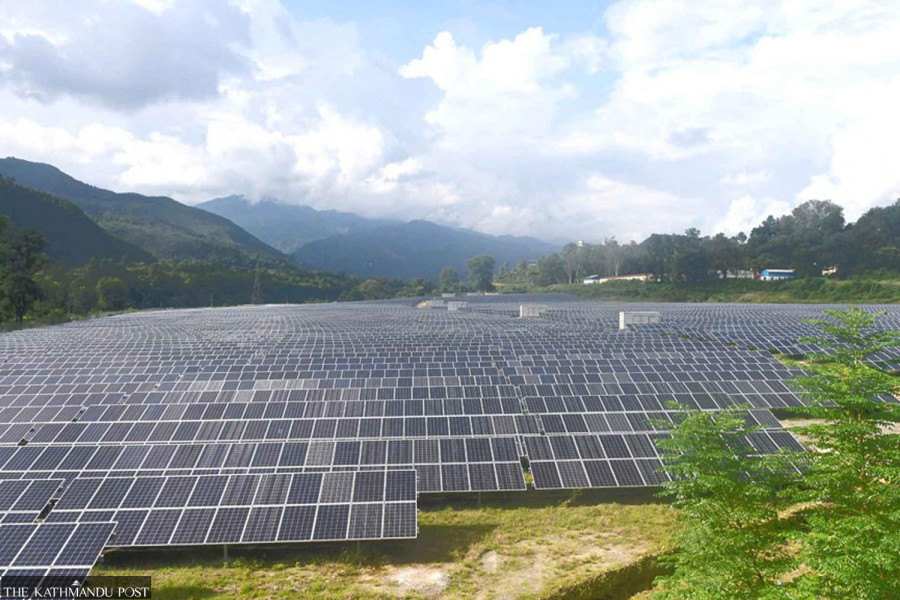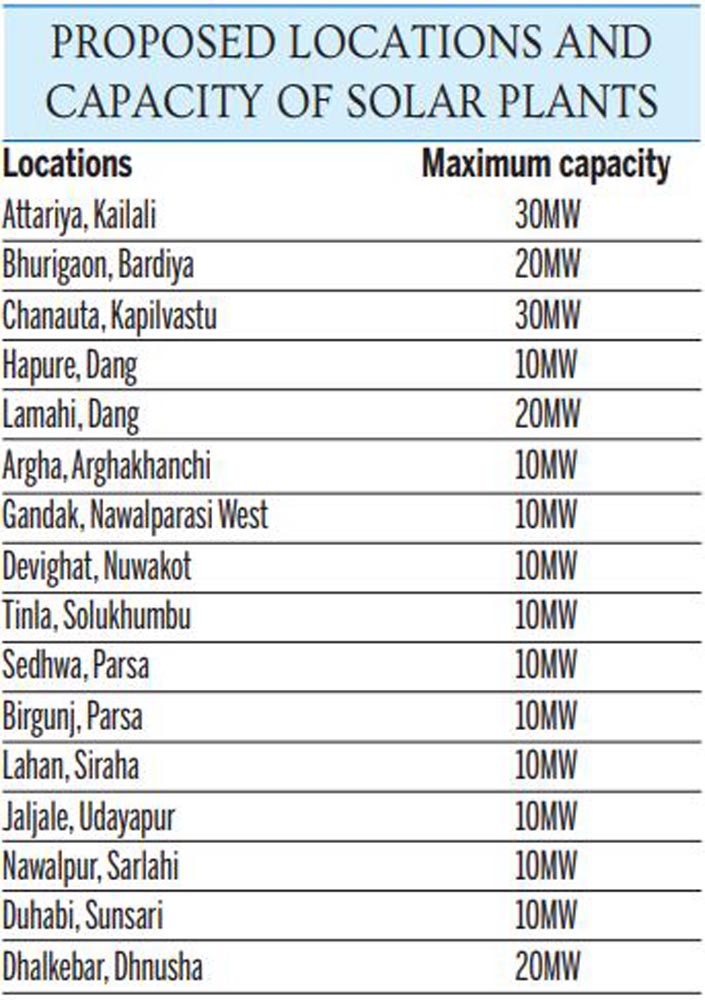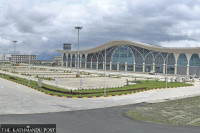National
Utility seeks bids to supply solar power to grid
The electricity authority is buying solar power through competitive bidding, ending the fixed rate regime.
Prithvi Man Shrestha
Nepal Electricity Authority has invited proposals from developers for setting up solar plants connected to the grid so they can sell power through competitive bidding.
The NEA plans to buy a maximum 100MW of power from such solar plants proposed to be developed by the private sector at 16 locations across the country. Up to 230MW of solar power plants could be developed in those locations.
This is for the first time that the state-owned power utility sought to buy solar power through bids.
In January, the NEA board had decided to procure solar energy only through bidding, ending the fixed rate regime of the previous three years. The NEA said it sought to buy solar power through open competition to bring down the prices considering the significant cheapening of solar equipment in the neighbouring countries and global market.
In March, the power utility had decided to cap the maximum rate to be offered to solar power generators at Rs5.94 per unit. Earlier, the NEA had been signing power purchase agreements with developers at a fixed rate of Rs7.30 per unit based on the Working Procedure on Grid Connected Alternative Electric Energy Development-2017.
“Proposals were requested to select the bidders who want to develop power in the designated area and sell electricity to us at less than Rs5.94 per unit,” said NEA Spokesperson Suresh Bhattarai. “We will sign the PPA only with the developers who pass technical evaluation and offer competitive bids below the maximum price ceiling.” As per the notice issued on November 28, the bidders can submit RfPs by February 26. As per the bid notice, the solar project must be commissioned within 18 months from the date of PPA signing between the NEA and the developer.
As per the notice, bidder(s) can propose a maximum capacity set for specific locations ranging from 10MW to 30MW based on the location. They cannot propose to deliver less than 1MW at the delivery point.
The bidder can choose any solar photovoltaic power generation technology. The developer will also be responsible for evacuating power from the plant to the nearby NEA substation, according to the RfP notice.
The power utility will sign the PPA with the developers for 25 years as per the Working Procedure on Grid Connected Alternative Electric Energy Development-2021. After that period, the developers have to hand over the solar plants along with the land used to the government.
However, solar power producers say the price cap on solar power could make many solar plants unfeasible as the prices of solar panels have risen globally again amid supply constraints and the Russian invasion of Ukraine.
“Investors may need to wait for 15 to 20 years to recover their investment,” Bharat Kumar Malla, senior vice-president of the Solar Electric Manufacturers Association Nepal told the Post in October. “The investors will rethink whether to invest in solar plants in Nepal.”
Currently, the contribution of solar power in the country’s energy mix is minimal. According to the Ministry of Energy, Water Resources and Irrigation, as much as 44 megawatts of solar energy has been connected to the national grid as of last fiscal year ended mid-July. This contributes 1.94 percent to Nepal’s total installed capacity.
Nepal’s total power generation in mid-July stood at 2268MW, according to the energy ministry.
The power monopoly made a move to buy solar energy in volumes as part of implementing the government policy of increasing the share of other renewable sources such as solar and wind to 10 percent of the total installed capacity.
The government aims to increase the share of solar and wind power as a generation mix would bolster energy security considering that heavy reliance on a single source could be risky.
Ram Prasad Dhital, former board member of the Electricity Regulatory Commission, told the Post in October that the country needs to diversify its energy mix to ensure energy security considering that Nepal is prone to earthquakes and landslides that could affect hydropower projects.
The Department of Electricity Development has issued survey licences for 44 projects with a combined capacity of 1,238.7 megawatts.
Major projects getting survey licences include the 300MW Jhapa SPV Power Plant and the 200MW Nepalgunj SPV Power Plant to be developed by GT Energy; 250MW Grid Connected Solar Project in Kohalpur; and Banganga to be developed by Risen Clean Energy Nepal. On top of that, the department has issued construction licences for 21 solar projects with a combined capacity of 133.56MW.





 8.12°C Kathmandu
8.12°C Kathmandu















